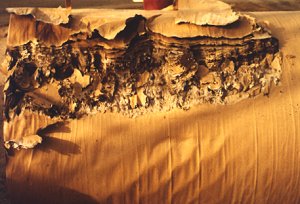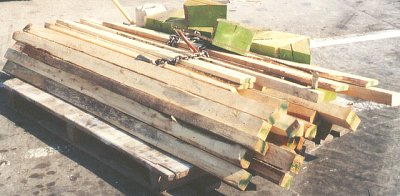Both biotic and chemical stresses are closely interrelated both with each other and with climatic stresses. It may accordingly be assumed to be generally known that biotic and chemical reactions proceed particularly well when exposed to certain temperature and moisture conditions.
Biotic stresses are deemed to be present if goods, packaging or parts thereof are damaged by living organisms of whatever kind. Chewing damage may, however, cause considerable losses as may, of course, damage caused by animal excreta.
The risk is relatively low in closed containers, provided that no animals have taken up residence before packing or "sneak in" during packing. Since many rodents are nocturnal creatures, CTUs which are being packed should be closed during work breaks or at the end of a shift especially during the hours of darkness. Prior inspection of cargo transport units for tightness is a basic requirement. Insects, for example, can nonetheless still get into such closed containers which, although classed as unventilated, still have openings of small cross-section.
It will be virtually impossible to avoid damage if goods and/or packaging are infested before packing and such infestation is not noticed. In the case of "open" cargo transport units, infestation can only be prevented by providing sufficiently tight packaging or suitable preservation.
 |
Beetle chewing damage on a paper roll |
Other frequently observed phenomena include infestation of the packed goods or packaging by fungi, especially molds, bacteria or other microorganisms. Heat and high relative humidity encourage the development of mold and the multiplication of e.g. bacteria. Slight air movement also encourages growth.
It is advisable to stack cargo securing lumber with spacing battens and store it under cover; in this way, air can pass between the layers of lumber and mold formation is prevented.
While the CTU packing guidelines do not mention biotic stresses, they do point out that certain countries, wishing to prevent the introduction of pests, place specific conditions on the lumber to be used for packaging and securing.
Point 3.3.2 of the CTU packing guidelines states:
-
If a CTU is destined for a country with wood treatment quarantine regulations, care should be taken that all wood in the unit, packaging and cargo complies with the regulations. It is a useful practice to place a copy of the wood treatment certificate in a conspicuous place inside and, where appropriate, outside the unit in a weatherproof pouch.
 |
|
| Lumber treated against the Sirex wasp - colored for differentiation |